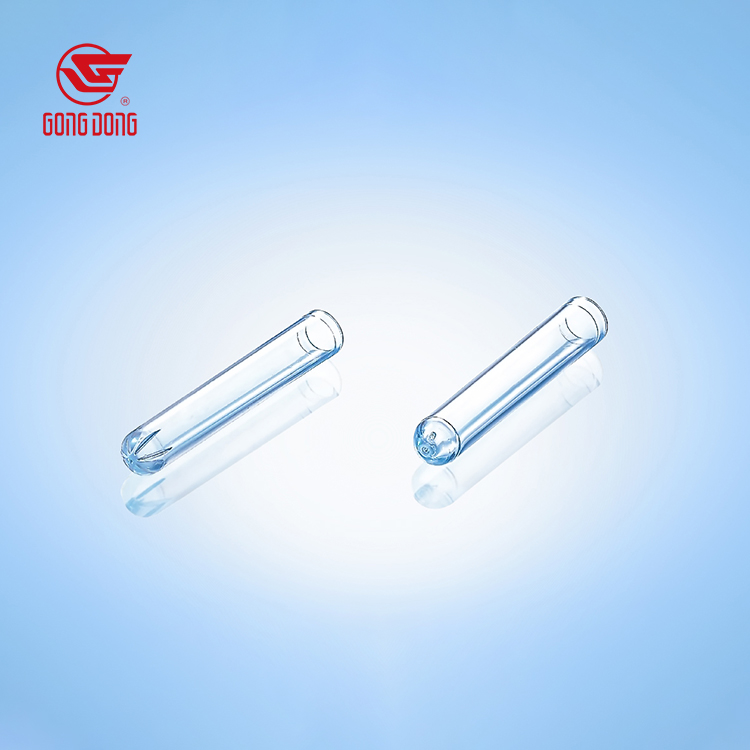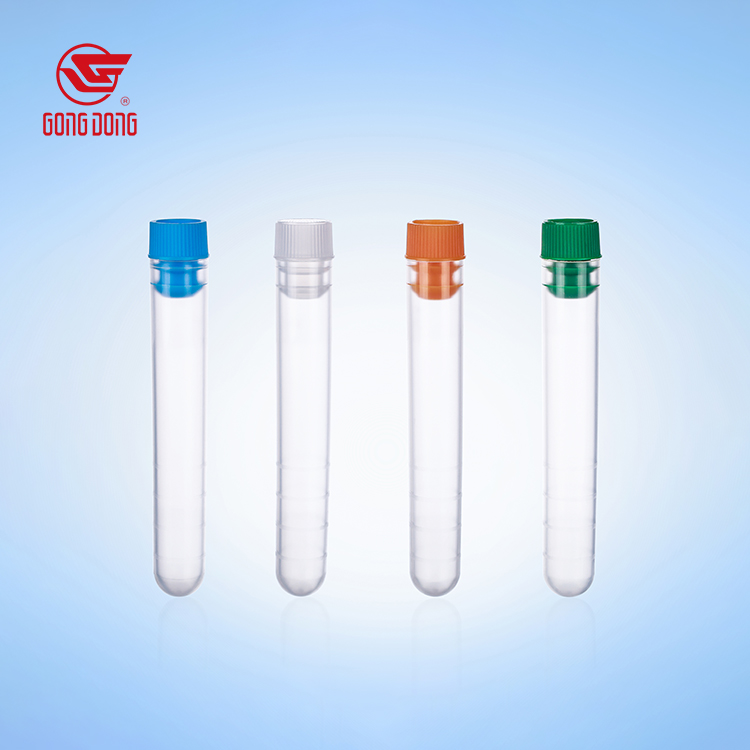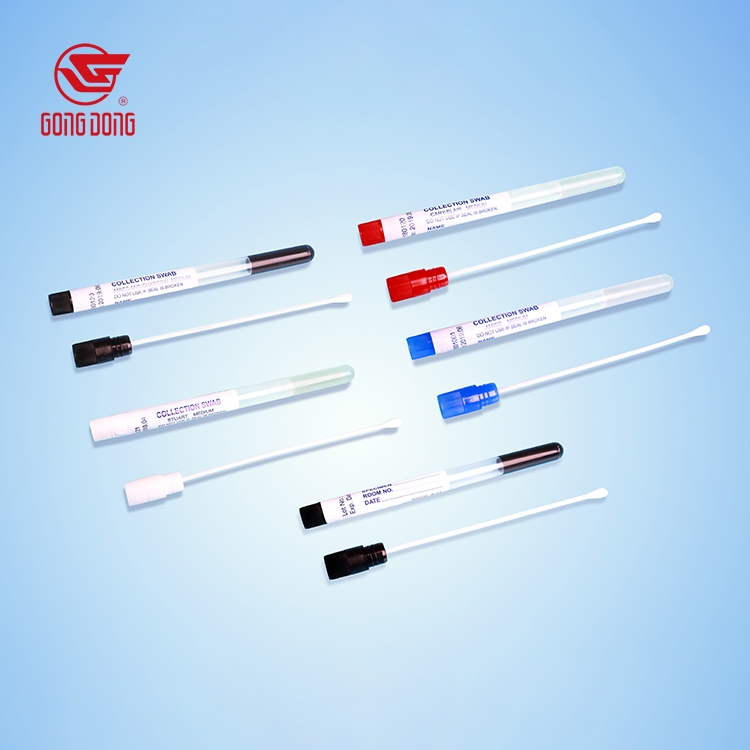

Views: 0 Author: Site Editor Publish Time: 2025-10-13 Origin: Site








Test tubes are indispensable tools in scientific laboratories worldwide, serving as the backbone for various experiments and analyses. Their versatility and utility in holding, mixing, and heating substances make them essential in fields ranging from chemistry to biology. This article explores the myriad uses of test tubes, delving into their construction, applications, and significance in both research and industry. For those interested in the specifics of test tube manufacturing, test tube production details can provide further insights.

Test tubes are cylindrical containers, typically made from glass or plastic, with a rounded or flat bottom and an open top. The choice of material—borosilicate glass or polypropylene—depends on the intended use. Borosilicate glass is favored for its thermal and chemical resistance, while polypropylene is chosen for its impact resistance and autoclavability. These materials ensure that test tubes can withstand various experimental conditions without compromising the integrity of the samples they hold.
Borosilicate glass is renowned for its ability to endure sudden temperature changes, making it ideal for experiments involving heat. Its transparency allows for clear observation of reactions, while its non-porous surface minimizes contamination risks. Polypropylene, on the other hand, offers excellent chemical resistance and is suitable for applications requiring physical strength. Its lightweight nature and ability to be sterilized at high temperatures make it a popular choice in microbiology and biotechnology labs.

Test tubes are used across various scientific disciplines, each application highlighting their versatility and indispensability. In chemical laboratories, they are essential for mixing, heating, and observing reactions. Their design allows chemists to handle chemicals safely, facilitating accurate measurements and analyses. In biological research, test tubes are used to prepare and store solutions, culture media, and biological samples, playing a crucial role in experiments ranging from cell culture to genetic studies.
In chemical analysis, test tubes are used to mix and react small amounts of reagents. Their transparency allows chemists to observe reactions and measure changes accurately. This is particularly important in experiments where precise measurements are crucial for reliable results. Test tubes also facilitate the separation of immiscible liquids, aiding in phase separation studies in analytical and preparative chemistry.
Test tubes provide a controlled environment for the growth and observation of microorganisms. In microbiology, they are used to culture bacteria and fungi, allowing researchers to study these organisms under controlled conditions. The ability to maintain sterility and control environmental factors makes test tubes ideal for microbiological studies.
Test tubes are suitable for heating substances to different temperatures, making them perfect for thermal studies and stability analysis. Their heat resistance allows them to withstand the high temperatures required for certain experiments, such as those involving thermal cycling in polymerase chain reactions (PCR).

Beyond research laboratories, test tubes find applications in various industries, including pharmaceuticals, food production, and education. In the pharmaceutical industry, they are crucial for drug development and testing, providing a safe environment for chemical reactions and analyses. In the food industry, test tubes are used for quality testing and analysis, ensuring that products meet safety standards. Educational institutions use test tubes to teach basic scientific principles, allowing students to conduct experiments and gain hands-on experience in laboratory settings.
In the pharmaceutical industry, test tubes are vital during the research and development phase of new drugs. They allow scientists to conduct experiments in a controlled environment, ensuring the accuracy and reliability of results. Test tubes also play a role in quality control, helping to verify the consistency and safety of pharmaceutical products.
In educational settings, test tubes are essential tools for teaching scientific concepts. They allow students to perform basic experiments, observe chemical reactions, and understand fundamental scientific principles. The simplicity and effectiveness of test tubes make them ideal for classroom use, providing students with practical experience in scientific experimentation.
Test tubes are versatile and indispensable tools in scientific research and industry. Their ability to hold, mix, and heat substances safely and efficiently makes them essential in various applications, from chemical analysis to microbiological studies. Understanding the different types of test tubes, their uses, and best practices for care and maintenance is crucial for anyone working in a laboratory setting. For more information on the specific uses and benefits of test tubes, test tube details can provide further insights.
1. What is the primary material used in test tubes?
Borosilicate glass and polypropylene are the primary materials used in test tubes, each offering unique advantages for different applications.
2. Can test tubes be reused?
Glass test tubes can be cleaned and sterilized for reuse, while plastic test tubes are often designed for single use, although some can be autoclaved for reuse.
3. What are the common applications of test tubes?
Test tubes are used for chemical reactions, microbiological cultures, heat tests, and educational experiments, among other applications.
4. How should test tubes be cleaned?
Glass test tubes should be rinsed, washed with detergent, and sterilized. Plastic test tubes may require milder cleaning methods and should be disposed of if not reusable.
5. What industries rely heavily on test tubes?
The pharmaceutical, food, and educational industries rely heavily on test tubes for various applications, including drug development, quality testing, and teaching scientific principles.
6. Why are test tubes important in microbiology?
Test tubes provide a controlled environment for growing and observing microorganisms, making them essential for microbiological studies.
7. What is the significance of test tube material choice?
The choice of material affects the test tube's resistance to heat, chemicals, and impact, influencing its suitability for specific applications.